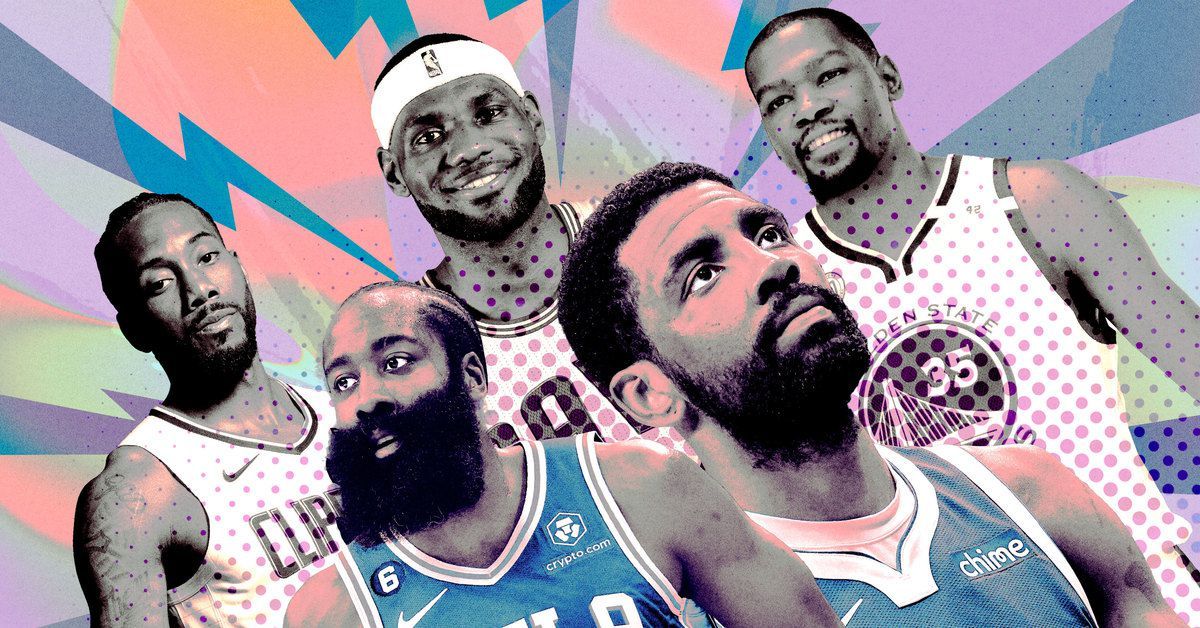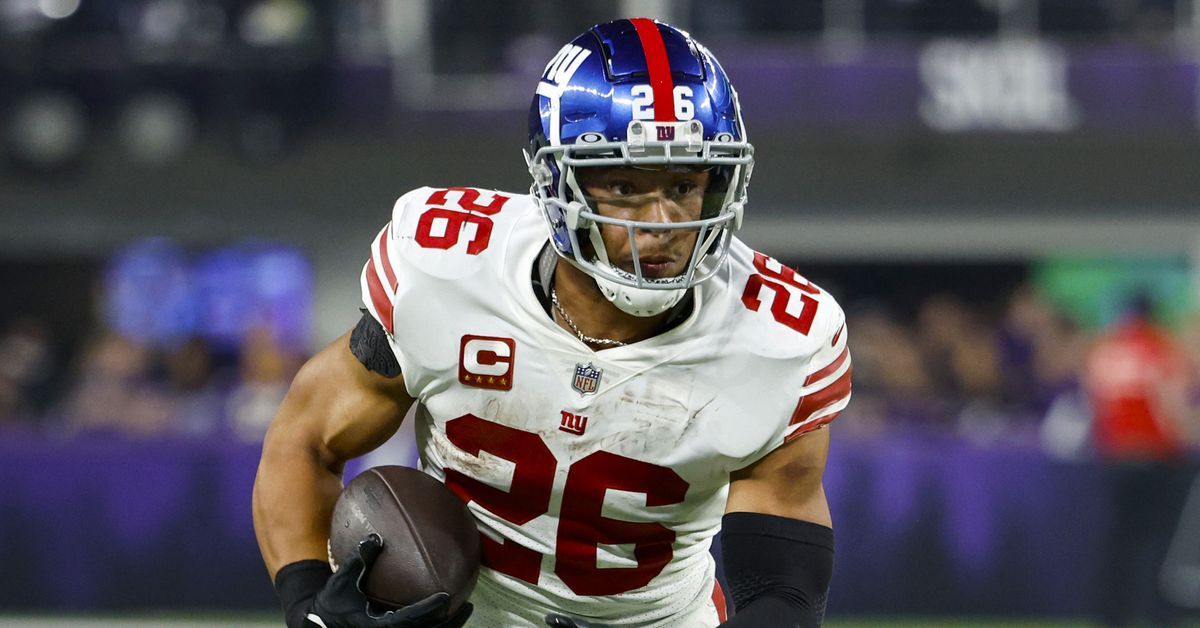Where Are All the NBA’s Superstar Free Agents?
It’s almost a cliché at this point to mention that many NBA fans seem to care more about the offseason than the actual season. But that claim is no less true for all its banality—from fake trades to mock drafts to free agent rumors, the NBA’s transaction ecosystem is as busy as ever in late June.
Yet the irony of that interest is that free agency, at least, isn’t as important as its hype suggests. The market opens this weekend, at 6 p.m. Eastern time on June 30, but the frenzy of signings won’t include anyone who can realistically be the best player on a title team.
The most talented players available in free agency this year are guards who are better suited as supporting players, rather than top-tier stars, at this point in their careers; this is, as Rob Mahoney wrote for The Ringer this week, “the summer of the imperfect point guard.” James Harden hasn’t made an All-NBA team in the last three seasons and will probably re-sign with the 76ers anyway. Kyrie Irving hasn’t made an All-NBA team in the last two seasons—and has never been a first-teamer—and will probably re-sign with the Mavericks.
After that duo, the top free agent is … Draymond Green? He remains an elite defender but hasn’t averaged double-digit points in any season in the last half decade and hasn’t made an All-NBA team since 2016-17. Khris Middleton? He is about to turn 32 years old, has never made an All-NBA team, and hasn’t been healthy for the last year and a half. Fred VanVleet? The Raptors point guard has never made an All-NBA team either.
The Offer Sheet Will Portland finally give in and trade Dame Lillard? We’re keeping a close watch on all of the biggest free agents, trade targets, retirement bluffers, and more in our new offseason tracker.
The point is that true difference-makers will be hard to find in free agency this summer, which was also the case last summer and the summer before that and the summer before that. As The Athletic’s John Hollinger wrote earlier this month, “Let’s face it: NBA free agency is getting a bit less sexy than it used to be.”
It was plenty sexy in 2019, when the star-studded free agent class sent (literal) shockwaves through the league. Kevin Durant and Kyrie Irving signed with the Nets. Jimmy Butler went to the Heat in a sign-and-trade. Kawhi Leonard inked with the Clippers.
In the summer of 2019, seven different free agents changed teams for contracts worth at least $100 million. But in the three years since, only two players have done the same: Jalen Brunson, joining the Knicks, and Gordon Hayward, heading to Charlotte.
$100 Million Contracts for Free Agent Team-Switchers Since 2019 Player Summer Old Team New Team Contract (Years/Dollars) Player Summer Old Team New Team Contract (Years/Dollars) Jalen Brunson 2022 Mavericks Knicks 4/$104 million Gordon Hayward 2020 Celtics Hornets 4/$120 million Kevin Durant 2019 Warriors Nets 4/$164 million Jimmy Butler 2019 76ers Heat 4/$141 million Kemba Walker 2019 Hornets Celtics 4/$141 million Kyrie Irving 2019 Celtics Nets 4/$136 million D'Angelo Russell 2019 Nets Warriors 4/$117 million Al Horford 2019 Celtics 76ers 4/$109 million Kawhi Leonard 2019 Raptors Clippers 3/$103 million
To be fair, 2019 was an outlier with that nine-figure volume. But most summers throughout the 2010s brought some sort of massive free agent drama. In 2018, LeBron James joined the Lakers. In 2016, Durant became a Warrior. In 2015, LaMarcus Aldridge sparked a bidding war after a seventh-place MVP finish, then signed with the Spurs. In 2014, LeBron returned to Cleveland.
Free agents like Durant and LeBron wielded the power to swing title races by themselves. But the open market hasn’t held such sway for four offseasons in a row. Since 2019, 15 players have signed with a new team for at least $40 million, and only two of them—Brunson and Spencer Dinwiddie, who was traded twice in the interim—started regularly for a playoff team in 2023.
Biggest Contracts for Free Agent Team-Switchers, 2020-22 Player Summer Old Team New Team Contract (Years/Dollars) Player Summer Old Team New Team Contract (Years/Dollars) Gordon Hayward 2020 Celtics Hornets 4/$120 million Jalen Brunson 2022 Mavericks Knicks 4/$104 million DeMar DeRozan 2021 Spurs Bulls 3/$85 million Kyle Lowry 2021 Raptors Heat 3/$85 million Lonzo Ball 2021 Pelicans Bulls 4/$80 million Evan Fournier 2021 Celtics Knicks 4/$73 million Bogdan Bogdanovic 2020 Kings Hawks 4/$72 million Collin Sexton 2022 Cavaliers Jazz 4/$71 million Lauri Markkanen 2021 Bulls Cavaliers 4/$67 million Danilo Gallinari 2020 Thunder Hawks 3/$61 million Jerami Grant 2020 Nuggets Pistons 3/$60 million Spencer Dinwiddie 2021 Nets Wizards 3/$54 million Devonte' Graham 2021 Hornets Pelicans 4/$47 million Doug McDermott 2021 Pacers Spurs 3/$42 million Christian Wood 2020 Pistons Rockets 3/$41 million
Even the best players from that group have led teams that were more feel-good underdogs than actual championship contenders. Brunson was remarkable in his first season in New York, but he’s also never made an All-Star or All-NBA team and is only a borderline top-25 player. DeMar DeRozan has delighted Bulls fans with clutch buckets and midrange mastery, but his personal renaissance has garnered a grand total of one playoff win in two seasons in Chicago.
Unfortunately for free agency fanatics, this trend is unlikely to change anytime soon. Among the 10 first- and second-team All-NBA honorees last season, none reached free agency this summer, and only one can reach the open market next summer. And even that player—Jaylen Brown—is the least reliable one from this group of 10 and is likely to sign an extension with the Celtics in short order.
2023 First- and Second-Team All-NBA Players Player Signed Through Player Signed Through Jaylen Brown 2024 Giannis Antetokounmpo 2025 Jimmy Butler 2025 Donovan Mitchell 2025 Jayson Tatum 2025 Stephen Curry 2026 Luka Doncic 2026 Joel Embiid 2026 Shai Gilgeous-Alexander 2027 Nikola Jokic 2027
A combination of factors has produced this state of affairs. Recent CBAs have allowed for more lucrative extensions for stars, who can sign supermax deals as early as two years before they’re due to reach free agency. For players, extensions are a smart move because they lock in more money early without much downside; they can always demand a trade later, if need be. And for teams, extensions are just as logical because, with rare exceptions, it’s better to keep a star for longer—and potentially trade them—than to risk their departure in free agency for no return.
(Even under the new, more restrictive CBA, which goes into effect this week, this calculus will likely remain the same when it comes to the league’s very best players. Perhaps secondary contributors and fringe All-Stars will no longer warrant such high-dollar contracts because of the downstream effect on team-building for teams that pay into the luxury tax. But legitimate MVP candidates are still worth every penny of a supermax extension if they can potentially lead a franchise to a championship.)
Meanwhile, the star trade market, with teams bundling previously unseen hoards of picks in blockbuster deals, has replaced the free agent market as the smoothest way to add win-now talent. The simultaneous rise of star trades and decline of star free agent deals constitutes a vicious cycle. If teams don’t think championship-level stars will be available in free agency, then they’ll be more tempted to pay big prices in trades, which in turn makes it more likely that players will feel confident that they can sign an extension and just ask for a trade if feelings sour later. Players ranging in star power, from Durant in Brooklyn to Harden in Houston to Ben Simmons in Philadelphia, have executed that particular strategy over the last few seasons.
One important ripple effect from this trend is that teams in search of another star must now venture to the trade market, even if it means parting with extra picks and young players. The Cavaliers, and other small-market teams like them, might have always sought a big swing for the likes of Donovan Mitchell if they didn’t expect free agents to prioritize the possibility of signing in Cleveland. But now, even traditional destination franchises like Miami and New York need to explore big trade gambles, rather than counting on stars to look their way in free agency.
Signing LeBron, Chris Bosh, and Butler theoretically sacrificed Miami’s cap space and nothing more. (In practice, all three deals were sign-and-trades, so they took a bit more wheel-greasing but still came with much lower price tags than full trades would have.) Trading for Damian Lillard, in contrast, would cost a much heftier haul. That sacrifice might be necessary if the Heat, coming off a surprise Finals appearance, want to make a meaningful upgrade while Butler is still in his prime—but it’s also much riskier, with a far steeper downside, than if they were simply able to sign a star while keeping all their picks and young players.
This analysis isn’t to say that free agency isn’t important anymore. This summer’s class includes a long list of useful role players across the positional spectrum, and the open market can still help provide depth to prospective contenders. Bruce Brown signed with the Nuggets an offseason before they won a title, as did Otto Porter Jr. with the 2022 Warriors, Bobby Portis with the 2021 Bucks, and a large contingent of role players with the 2020 Lakers.
But the most basic reality of NBA team-building is that—2004 Pistons aside—it takes a top-tier MVP candidate to win a championship, and top-tier MVP candidates aren’t available in free agency anymore.
A lack of free agents who can single-handedly swing the title race is not unique to the NBA. In the NFL, most notably, top quarterbacks rarely reach free agency in their primes, which makes finding a keeper in the draft or executing an ambitious trade—like the Rams’ deal for Matthew Stafford—essential to building a winner.
The same looks true in the NBA, for both the present and medium-term future: Shrewd draft selections and opportunistic trades have always mattered, but without free agency as a realistic path to star acquisition, those other routes have even more pressure. It’s fitting, in the end, that the most exciting rumors this summer aren’t tracking which free agent might sign with which team, as was the case when Durant was visiting the Hamptons, LeBron was updating his website colors, and Kawhi was inspiring sourcing duels. Instead, the biggest transaction thus far has been the Bradley Beal trade, and the biggest potential transaction to come would be a Lillard trade.
Source: The Ringer


